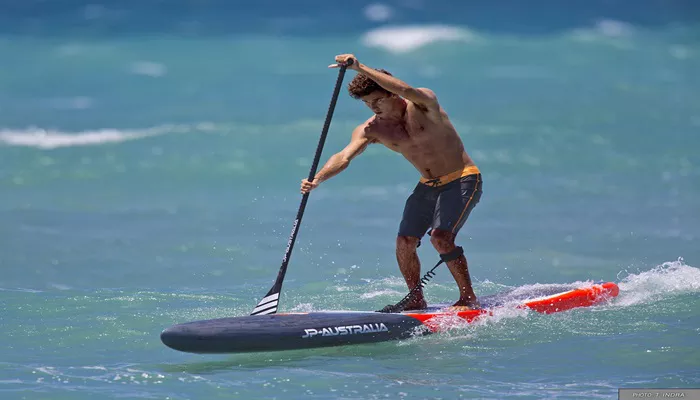Paddling is the foundation of surfing. It determines how quickly you can get out to the lineup, position yourself for waves, and ultimately catch more waves with less effort. Many surfers, especially beginners and intermediates, struggle with inefficient paddling techniques, leading to fatigue and missed opportunities.
Improving your paddling speed and efficiency requires a combination of proper technique, physical conditioning, and an understanding of how to optimize movement in the water. In this article, we’ll break down the key strategies to help you paddle faster, conserve energy, and enhance your overall surfing performance.
Understanding the Importance of Paddling Efficiency
Paddling isn’t just about speed—it’s also about efficiency. Many surfers exert too much effort due to poor technique, lack of conditioning, or using the wrong equipment. Improving paddling efficiency allows you to:
Conserve energy for catching waves and long surf sessions.
Get into position quickly and out-paddle other surfers when needed.
Improve your wave count by getting into waves earlier.
Increase confidence and endurance in challenging conditions.
Perfecting Your Paddling Technique
The right technique can significantly improve your paddling speed while reducing fatigue.
1. Maintain the Right Body Position
Proper body positioning on the surfboard is crucial for speed and balance:
Position yourself so that your board is flat in the water, minimizing drag.
Avoid lying too far back, which lifts the nose and creates resistance.
Avoid lying too far forward, which can cause the nose to sink and slow you down.
Keep your chest slightly raised by engaging your lower back and core muscles.
2. Optimize Your Arm Stroke
Your arm stroke plays a major role in paddling speed:
Enter the water correctly: Keep your fingers slightly apart and extend your arm fully before pulling.
Deep and controlled stroke: Instead of splashing on the surface, drive your hand deep into the water, pulling it back smoothly.
Elbow Position: Keep your elbow higher than your hand during the pull to generate more power.
Finish the stroke completely: Extend your stroke past your waist before bringing your arm back.
3. Reduce Unnecessary Movements
Efficient paddling is about minimizing wasted energy:
Avoid excessive rocking or wiggling on the board.
Keep your head stable and avoid unnecessary movement.
Maintain a straight paddle path rather than sweeping your arms outward.
Building Strength and Endurance for Faster Paddling
Strength and endurance training play a key role in paddling power. Here’s how to condition your body for better paddling speed.
1. Develop Shoulder and Back Strength
Strong shoulders and back muscles enhance paddling power. Include these exercises in your training routine:
Pull-ups – Strengthen lats and upper back.
Lat Pulldowns – Simulate the paddling motion.
Resistance Band Rows – Improve endurance and flexibility.
Plank Rows – Build core and upper-body coordination.
2. Improve Core Stability
A strong core enhances paddling balance and efficiency. Try:
Planks and Side Planks – Improve stability and endurance.
Russian Twists – Strengthen obliques and rotation power.
Leg Raises – Engage lower abdominal muscles to maintain a stable paddling posture.
3. Enhance Cardiovascular Fitness
Better endurance allows you to maintain paddling speed for longer periods. Work on:
Swimming drills – Mimic paddling motion while improving breath control.
Interval training – Alternate between high-intensity paddling and rest.
Rowing machine workouts – Simulate paddling mechanics while building endurance.
Breath Control And Energy Conservation
Breathing plays a crucial role in maintaining stamina while paddling.
1. Develop Rhythmic Breathing
Establish a controlled breathing pattern to avoid exhaustion:
Inhale deeply through your nose and exhale fully through your mouth.
Time your breaths with your stroke rhythm to maintain consistency.
2. Use Strategic Resting Techniques
Take short breaks by arching your back and stretching while floating.
Use moments between sets to regulate breathing and relax.
Choosing the Right Equipment for Faster Paddling
Your surfboard and gear affect paddling speed. Here’s how to optimize your setup:
1. Select the Right Board
Longer and wider boards offer more stability and buoyancy, making paddling easier.
Higher volume boards provide better floatation and reduce resistance.
Rounder nose designs allow for smoother gliding.
2. Wax Your Board Properly
A properly waxed board prevents unnecessary slipping, allowing you to maintain a strong paddling position.
Improving Paddling Strategy in the Water
Beyond technique and training, strategic paddling enhances speed and efficiency.
1. Use the Power of the Ocean
Paddle with the flow of rip currents to get to the lineup faster.
Time your paddling to coincide with lulls in wave sets.
2. Improve Your Wave Entry Timing
Begin paddling early before the wave reaches you.
Increase stroke speed as the wave approaches.
Arch your back slightly to reduce drag and match the wave’s speed.
3. Master the Turtle Roll and Duck Dive
Efficiently getting past waves prevents wasted energy:
Duck dive (for shortboards): Push your board underwater while submerging your body.
Turtle roll (for longboards): Flip your board upside down and hold onto the rails while a wave passes.
Conclusion
Improving paddling speed in surfing is a combination of proper technique, strength training, endurance building, and strategic ocean knowledge. By refining your paddling mechanics, strengthening key muscle groups, and optimizing your board choice, you can paddle faster, conserve energy, and catch more waves with ease.

